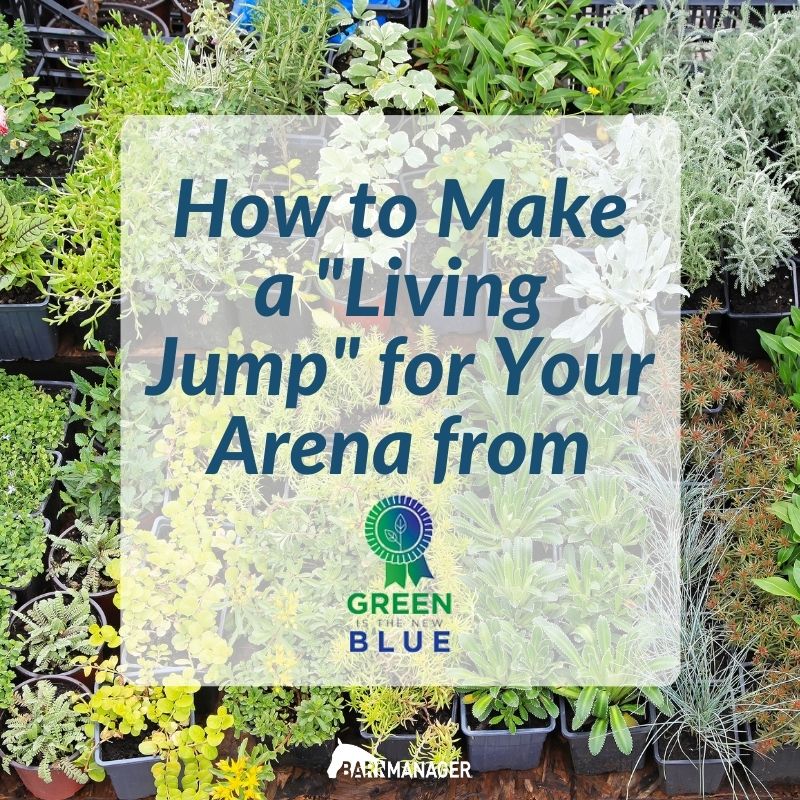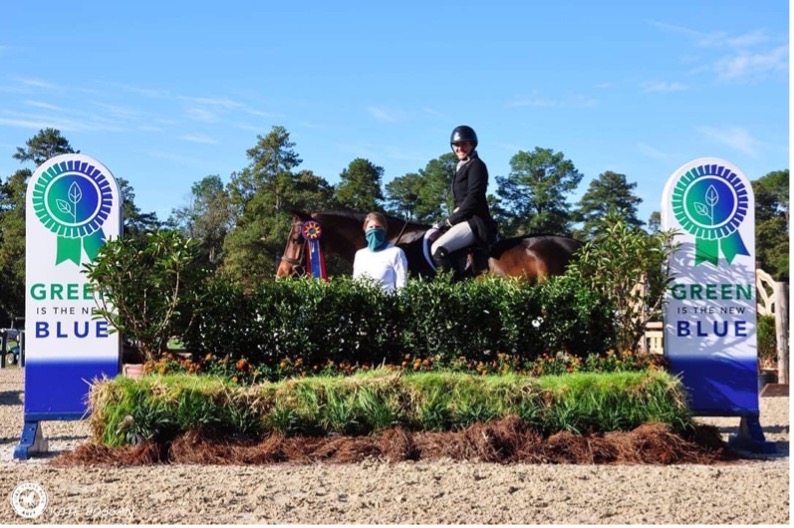
How to Create a “Living Jump” at Your Farm
 BarnManager is thrilled to welcome environmental non-profit group Green is the New Blue to shed some light on sustainability in the equestrian world. Green is the New Blue is an environmental non-profit that strives to reduce the environmental impacts of equine related events and activities. The organization encourages others to incorporate green practices into daily operations both at horse shows and at home.
BarnManager is thrilled to welcome environmental non-profit group Green is the New Blue to shed some light on sustainability in the equestrian world. Green is the New Blue is an environmental non-profit that strives to reduce the environmental impacts of equine related events and activities. The organization encourages others to incorporate green practices into daily operations both at horse shows and at home.
GINTB has two simple goals: to educate the equine industry about best practices for sustainability and ecological safety, and to provide the tools to make these changes easy and straight-forward to implement.
Founded by amateur rider Stephanie Bulger when she realized the detrimental impact horse events and venues had on the environment, GITNB is dedicated to reducing the environmental impact of horse shows and inspiring equestrians to do their part to live sustainably.
Look out for future pieces from Green Is the New Blue as we update you on more ways to go green in your barn!
How to create your living jump:
Green Is the New Blue has developed the concept of a “Living Jump” to promote biodiversity and support species that enhance ecosystem resilience. To build a Living Jump at your facility, all you need to do is source plants from a local nursery using native species that support pollinators and create habitats for other insects, such as ladybugs. Check out the steps below to see how to build your biodiverse jump course!
Biodiversity describes the overall variety of living things in the ecosystem, from microorganisms, to plants, to horses and their riders. Biodiversity is important because it provides us with vital resources such as food, water, shelter, medicine, and fuel. A biodiverse environment is also more resilient in the face of disaster. When equestrians source native plants within the course design and farm landscaping processes, they help to sustain local environments that, in turn, sustain human life.

The “Living Jump” at the Aiken Horse Park’s International Hunter Derby included South Carolina’s native species Ligustrum, Liriope, and Lantana. Photo: A&S Photography
1. Identify native plant species
Native species are those that live in the same ecosystem where they originated. Non-native species are those that do not naturally occur in an area, such as Alberta Spruce in a Florida hunter ring (they look like miniature Christmas trees!). Some species are invasive, meaning they cause ecological harm as they exist in an environment where they did not originate. Try to choose native plants that provide habitat for a variety of other species, such as pollinators. We recommend using the National Wildlife Federation’s Native Plant Finder to be sure you’re including beneficial species.
2. Source plants from a local nursery.
Once you have identified a list of species to include in your Living Jump, coordinate with a local nursery for pickup. Just as you would support local businesses in other aspects of life, such as your local tack or feed store, it is important to source plants from local nurseries that provide biodiversity benefits to your local ecosystem. If the plants were not grown on site, local nurseries are more likely to know where and how the plants were initially grown. Additionally, plants are often healthier when they are sourced and cared for locally, as opposed to being transported in bulk to department stores.
3. Build your jump to fit your arena.
Time to get creative! Build up your Living Jump using your locally sourced, native plants. If you want more spook for your hunter derby mount, add more elements. If you want to tone it down, build it smaller with fewer varieties of plants. Even with smaller jumps, you can still include plenty of beneficial species around the ring. Decorate according to your needs for horse, rider, or equine facility. Add plants to in-gates, jump standards, below rails, and anywhere else around the ring.
4. Reuse
It is important not to discard plants after they serve their purpose in the ring. With just a bit of research for each species, it’s possible to replant and harvest many species to use again next year. No space to replant? Consider gifting or returning them to a nursery or other facility that is better equipped to this. If you are hosting a single event, it is often possible to rent plants and return them later.
5. Share!
Once you’ve created your Living Jump, take lots of photos and spread the word on social media and with friends and family. When others see what you have created, you’ll inspire them to do the same, leading to more biodiversity among horse farms, increased business for local nurseries, and something pretty to have around the farm.
Find out more about Green Is the New Blue by following them on Instagram and Facebook, and by visiting their website.